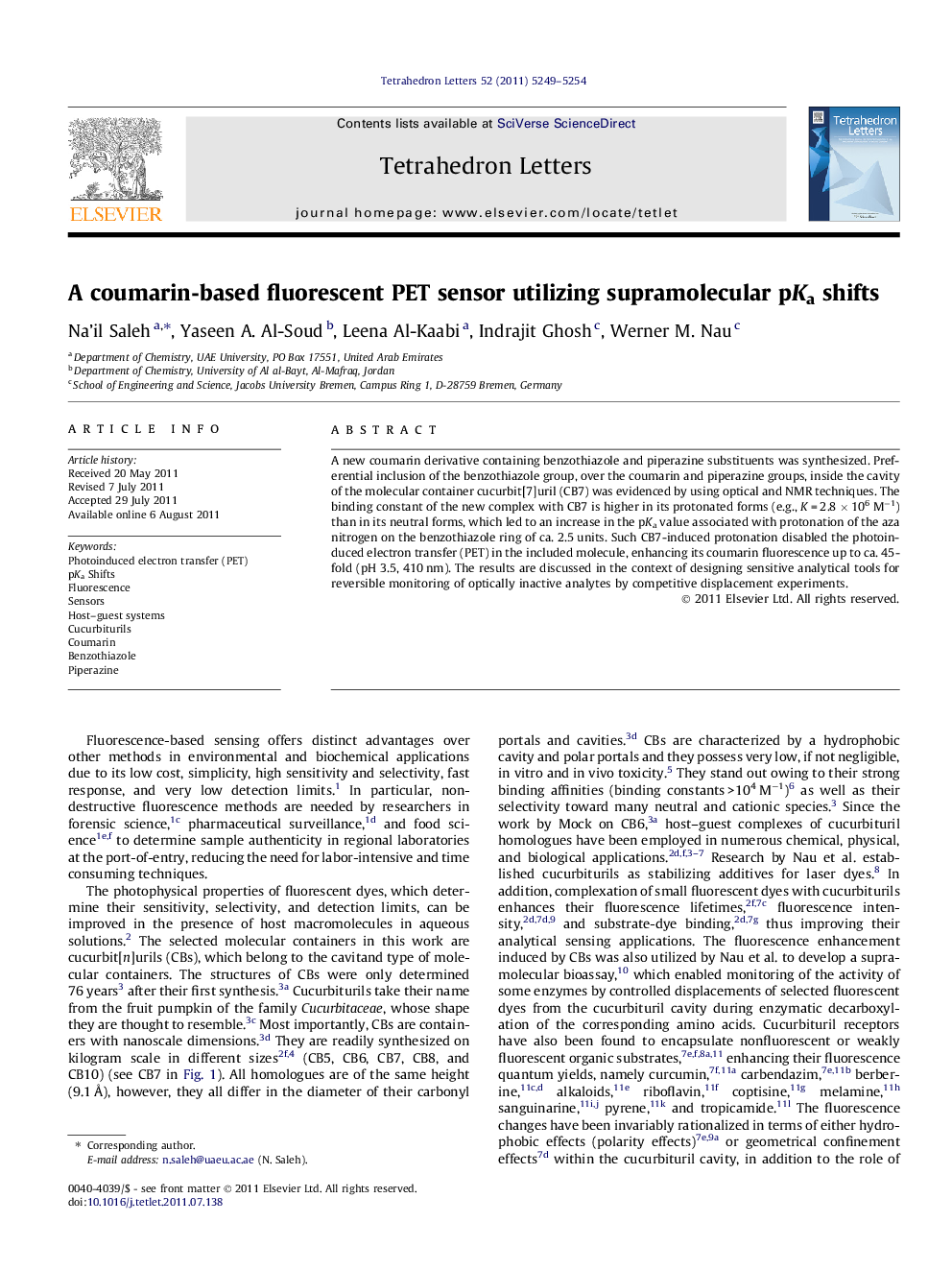| Article ID | Journal | Published Year | Pages | File Type |
|---|---|---|---|---|
| 5274981 | Tetrahedron Letters | 2011 | 6 Pages |
A new coumarin derivative containing benzothiazole and piperazine substituents was synthesized. Preferential inclusion of the benzothiazole group, over the coumarin and piperazine groups, inside the cavity of the molecular container cucurbit[7]uril (CB7) was evidenced by using optical and NMR techniques. The binding constant of the new complex with CB7 is higher in its protonated forms (e.g., KÂ =Â 2.8Â ÃÂ 106Â Mâ1) than in its neutral forms, which led to an increase in the pKa value associated with protonation of the aza nitrogen on the benzothiazole ring of ca. 2.5Â units. Such CB7-induced protonation disabled the photoinduced electron transfer (PET) in the included molecule, enhancing its coumarin fluorescence up to ca. 45-fold (pH 3.5, 410Â nm). The results are discussed in the context of designing sensitive analytical tools for reversible monitoring of optically inactive analytes by competitive displacement experiments.
Graphical abstractA new coumarin-based sensor (P-3) is synthesized. The photoinduced electron transfer in P-3 is hindered by protonation of its benzothiazole anchor. The CB7-induced protonation at pH 3.5, at which the uncomplexed P-3 would remain unprotonated, causes a fluorescence enhancement of ca. 45-fold.Download full-size image
